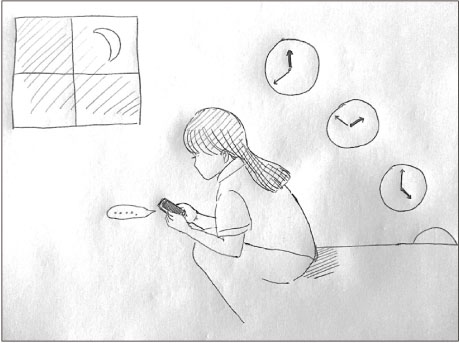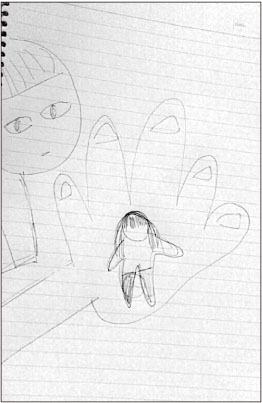J Korean Acad Nurs.
2019 Feb;49(1):46-58. 10.4040/jkan.2019.49.1.46.
Experiencing Coercive Control in Female Victims of Dating Violence
- Affiliations
-
- 1Department of Nursing, Inha University, Incheon, Korea. spark@inha.ac.kr
- KMID: 2440386
- DOI: http://doi.org/10.4040/jkan.2019.49.1.46
Abstract
- BACKGROUND
Dating violence refers to violence occurring between people in an intimate relationship. Forms of dating violence are often categorized into physical, psychological, and sexual violence, and most existing literature has followed this frame. However, few studies have focused on the phenomenon of living under the perpetrator's coercive control in victims of dating violence, although those experiences are known to be signs of severe forms of violence later on. PURPOSE: The purpose of this study was to explore the experiences of being coercively controlled in female victims who had experienced dating violence.
METHODS
For this study, in-depth interviews were conducted with a total of 14 female victims, and all interviews were audio-recorded and transcribed. The data were analyzed using the phenomenological analysis method suggested by Colaizzi.
RESULTS
Three themes were derived in chronological order: idealizing the relationship (period of potential control), facing severer tyranny (period of coercive control), and escaping from the unending trap (period of post-control). The results showed that the victims experienced perpetrators' control with specific patterns. The perpetrators' controlling behaviors were invisible, literally benevolent, at the beginning; however, severe forms of violence seemed to appear as their relationship deepened and the perpetrators failed to control the victims.
CONCLUSION
Findings from this study presented vivid experiences of female victims who needed help and care. Hopefully, the results can benefit in terms of developing evidence-based prevention strategies for victims as well as assessing the risks of severe forms of dating violence, such as physical attack or murder.
Keyword
MeSH Terms
Figure
Cited by 1 articles
-
An integrative literature review on intimate partner violence against women in South Korea
Hye Young Min, Jung Min Lee, Yoonjung Kim
Korean J Women Health Nurs. 2020;26(4):260-273. doi: 10.4069/kjwhn.2020.11.15.
Reference
-
1. Ryu BK. The protection system for the victims in dating violence. The Journal of Legal Studies. 2014; 22(3):91–114.2. Son MS, Cho JY. Survey of dating violence victimization [Internet]. Seoul: Korea Women's Hot Line;c2016. cited 2018 Mar 13. Available from: http://hotline.or.kr/board_statistics/28328.3. Dutton MA, Goodman LA. Coercion in intimate partner violence: Toward a new conceptualization. Sex Roles. 2005; 52(11-12):743–756. DOI: 10.1007/s11199-005-4196-6.
Article4. Stark E. Rethinking coercive control. Violence Against Women. 2009; 15(12):1509–1525. DOI: 10.1177/1077801209347452.
Article5. Shim YH, Kim HS. A study on the violence and control of wife-batters: Based on in-depth interviews. Issues in Feminism. 2001; (1):181–221.6. Tanha M, Beck CJ, Figueredo AJ, Raghavan C. Sex differences in intimate partner violence and the use of coercive control as a motivational factor for intimate partner violence. Journal of Interpersonal Violence. 2010; 25(10):1836–1854. DOI: 10.1177/0886260509354501.
Article7. Park S, Kim SH. Who are the victims and who are the perpetrators in dating violence?: Sharing the role of victim and perpetrator. Trauma, Violence, & Abuse. 2017; 09. 15. DOI: 10.1177/1524838017730648. Forthcoming.
Article8. Park S, Kim SH. The power of family and community factors in predicting dating violence: A meta-analysis. Aggression and Violent Behavior. 2018; 40:19–28. DOI: 10.1016/j.avb.2018.03.002.
Article9. Shen ACT, Chiu MYL, Gao J. Predictors of dating violence among Chinese adolescents: The role of gender-role beliefs and justification of violence. Journal of Interpersonal Violence. 2012; 27(6):1066–1089. DOI: 10.1177/0886260511424497.10. Walker K, Sleath E, Tramontano C. The prevalence and typologies of controlling behaviors in a general population sample. Journal of Interpersonal Violence. 2017; 10. 06. DOI: 10.1177/0886260517731785. Forthcoming.
Article11. Aizpurua E, Copp J, Ricarte JJ, Vázquez D. Controlling behaviors and intimate partner violence among women in Spain: An examination of individual, partner, and relationship risk factors for physical and psychological abuse. Journal of Interpersonal Violence. 2017; 08. 24. DOI: 10.1177/0886260517723744. Forthcoming.
Article12. Verschuere B, van Horn J, Buitelaar N. The role of control in intimate partner violence: A study in Dutch forensic outpatients. Journal of Interpersonal Violence. 2018; 05. 21. DOI: 10.1177/0886260518775152. Forthcoming.
Article13. Woo HJ, Jang SH, Kwon HI. A study on the overcoming experience of women suffering from dating violence. The Korean Journal of Woman Psychology. 2017; 22(3):315–335.14. Park KE, You YG. A study on the psychological innerness in female victims of dating violence. The Korean Journal of Counseling and Psychotherapy. 2017; 29(3):711–742. DOI: 10.23844/kjcp.2017.08.29.3.711.
Article15. Park HN, Jang SM. A study on factors affecting dating violence of college students - focused on drinking problems of victims and perpetrators. Journal of Future Social Work Research. 2012; 3(1):33–52.16. Yoo YS, Cha KS, Cho OH, Lee SK. Emergency department nurses' recognition of and educational needs for forensics nursing education. Korean Journal of Adult Nursing. 2012; 24(5):499–508. DOI: 10.7475/kjan.2012.24.5.499.
Article17. Colaizzi PF. Psychological research as the phenomenologist views it. In : Valle RS, King M, editors. Existential-phenomenological Alternatives for Psychology. New York: Oxford University Press;1978. p. 48–71.18. Liang B, Goodman L, Tummala-Narra P, Weintraub S. A theoretical framework for understanding help-seeking processes among survivors of intimate partner violence. American Journal of Community Psychology. 2005; 36(1-2):71–84. DOI: 10.1007/s10464-005-6233-6.
Article19. Straus MA, Hamby SL, Boney-McCoy S, Sugarman DB. The revised Conflict Tactics Scales (CTS2): Development and preliminary psychometric data. Journal of Family Issues. 1996; 17(3):283–316. DOI: 10.1177/019251396017003001.20. Lee M, Stefani KM, Park EC. Gender-specific differences in risk for intimate partner violence in South Korea. BMC Public Health. 2014; 14:415. DOI: 10.1186/1471-2458-14-415.
Article21. Lincoln YS, Guba EG. Naturalistic inquiry. Newbury Park (CA): Sage publications;1985. p. 289–331.22. Abramson K. Turning up the lights on gaslighting. Philosophical Perspectives. 2014; 28(1):1–30. DOI: 10.1111/phpe.12046.
Article23. Hyun MH, Yoo JM, Lee JE. The correction of the investment model regarding the maintenance of violent dating relationships focus on altruistic delusion. Korean Journal of Health Psychology. 2007; 12(4):983–995. DOI: 10.17315/kjhp.2007.12.4.019.24. Bae SH, Sohn SY. Feminist analysis of damage experience by sexual abuse in dating relationships and reconstruction of the recognition. Journal of Women's Studies. 2016; 26(1):93–124.25. Kelly JB, Johnson MP. Differentiation among types of intimate partner violence: Research update and implications for interventions. Family Court Review. 2008; 46(3):476–499. DOI: 10.1111/j.1744-1617.2008.00215.x.
Article26. Oh SY, Kwak YG. The study on the states of dating violence and responding ways of it: Concentrating on the cases. The Korean Association of Police Science Review. 2011; 13(5):3–28.27. Suh KH. Psychological impacts and interventions of dating violence. Korean Journal of Psychology. 2006; 2006(1):48–49.28. Shin SR. How does college student's experience of sexual abuse and alcohol abuse affect offence of dating violence?: Focused on mediate of criminal history. The Korean Association of Police Science Review. 2017; 19(6):179–205.
- Full Text Links
- Actions
-
Cited
- CITED
-
- Close
- Share
- Similar articles
-
- Factors Influencing the Experiences of Sexual Violence Victims while Dating as College Students
- Predictive Factors for Perpetrations of Dating Violence in University Students
- Domestic Violence: Evaluation and Prevention of Medical Sequelae of Victims
- Sexual Double Standard, Dating Violence Recognition, and Sexual Assertiveness among University Students in South Korea
- Problem of sexual violence in the medical system and plans for improvement from a legal perspective




